Wednesday
April 7th, 2021
⬅ Click here to return to the Spring Camp portal
| Day | Schedule |
|---|---|
| Wednesday 4/7/2021 |
Eggs, nests, and dens Meet our pool birds Craft a pop-up baby bird in a nest Click on follow-up DIY activities below: Print Wednesday's activities |
Poorwill Camouflage Activity

Tigers have stripes, baby deer have polka dots, owls look like tree bark, and octopuses can change color.
It's amazing how many different kinds of camouflage exist in the animal world!
Can you see how the color of the coyote's fur helps it blend in with the grass and rocks in the picture?
 The Poorwill is a bird with excellent camouflage! The colors of its feathers help it blend in with the leaves, twigs, and dirt on the forest floor. In this activity, you will get to help a Poorwill camouflage outside, and then challenge a partner to find him!
The Poorwill is a bird with excellent camouflage! The colors of its feathers help it blend in with the leaves, twigs, and dirt on the forest floor. In this activity, you will get to help a Poorwill camouflage outside, and then challenge a partner to find him!
Here's what you will need for this activity:
✅ Click here to open and print the Poorwill Camouflage activity.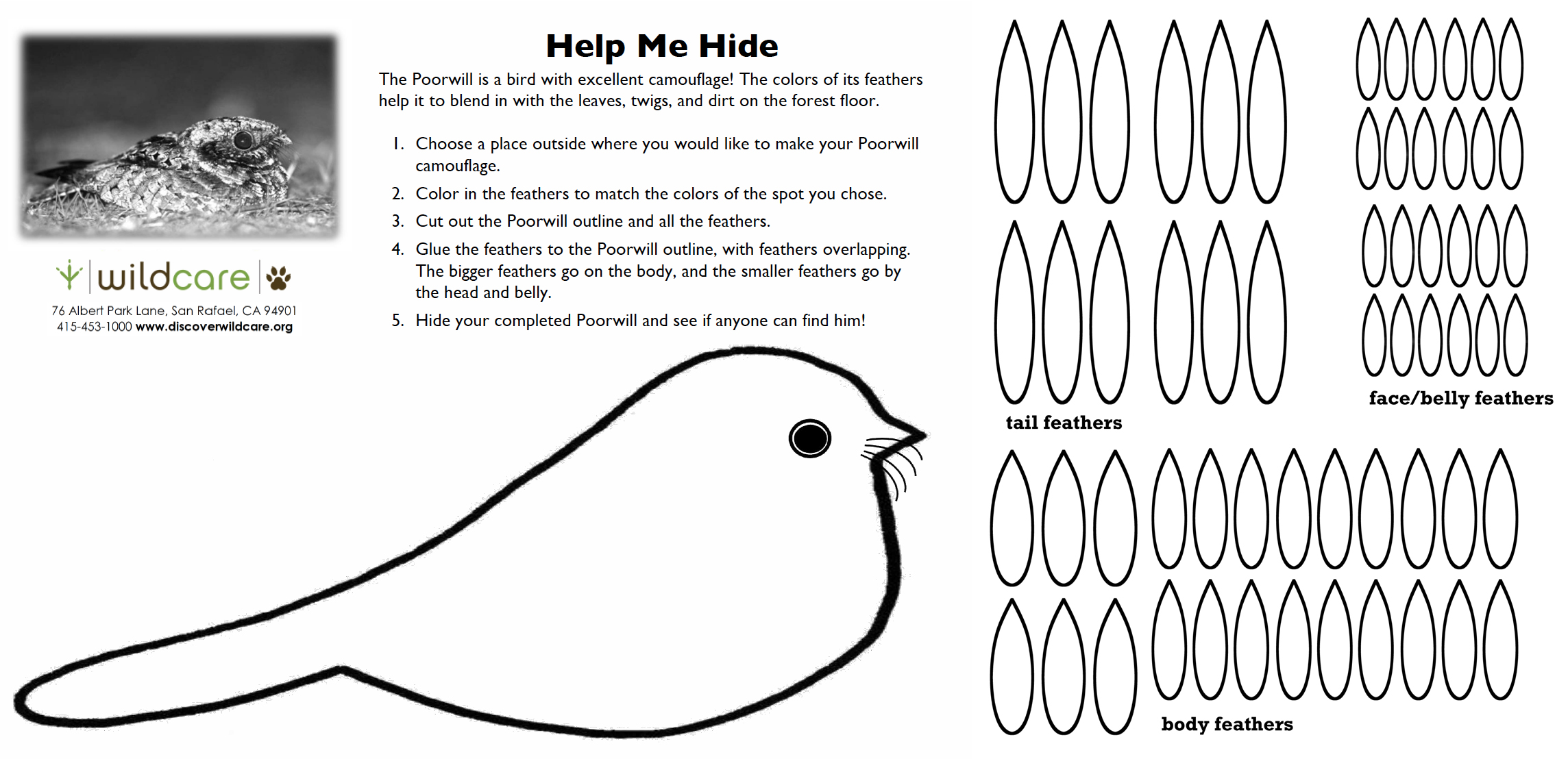 Click here to open and print the Poorwill Camouflage activity.
Click here to open and print the Poorwill Camouflage activity.
Just for fun, take a look at some of these other animals whose skin, feathers, or fur help them camouflage in their habitats!
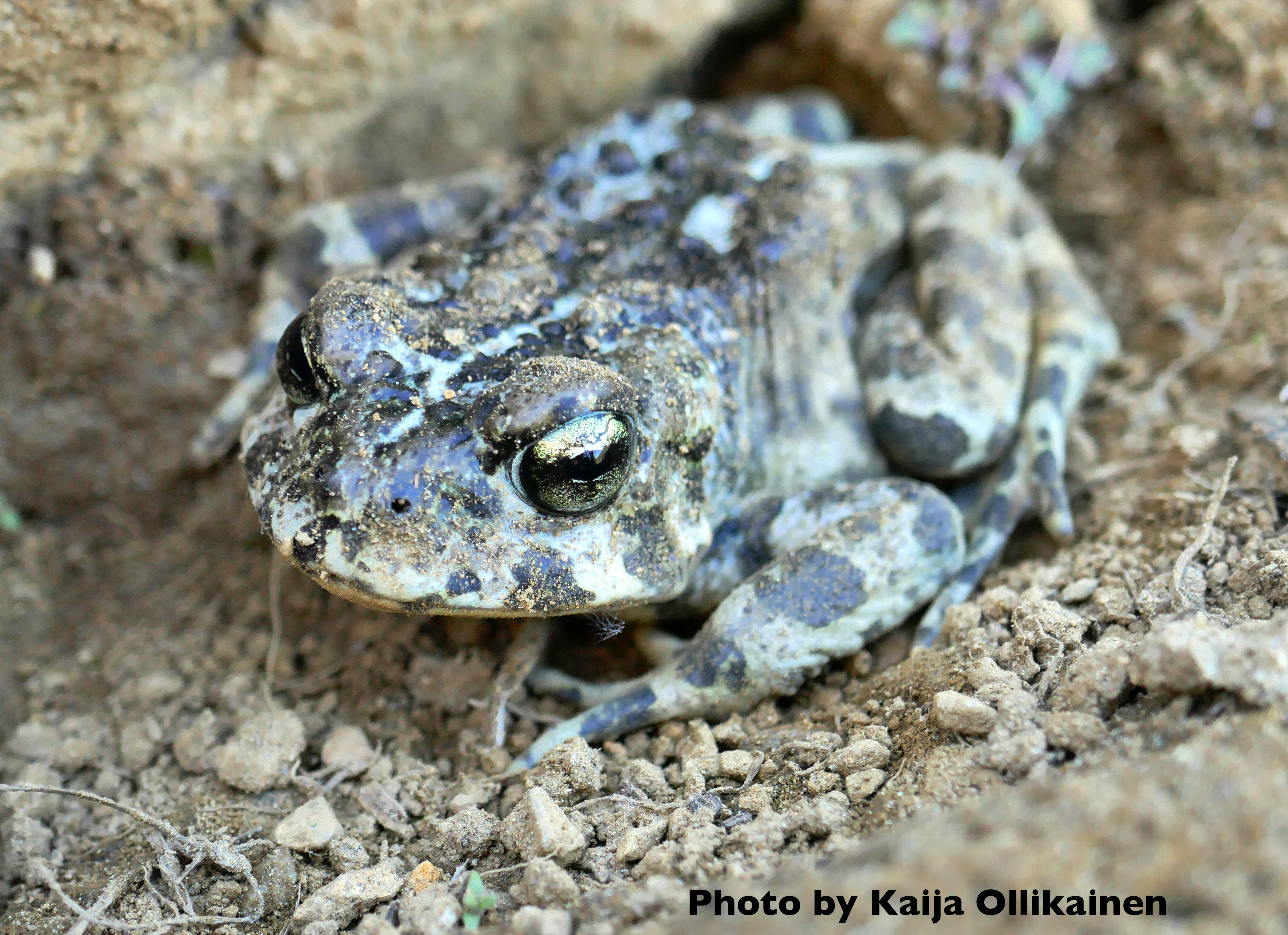
Western Toad
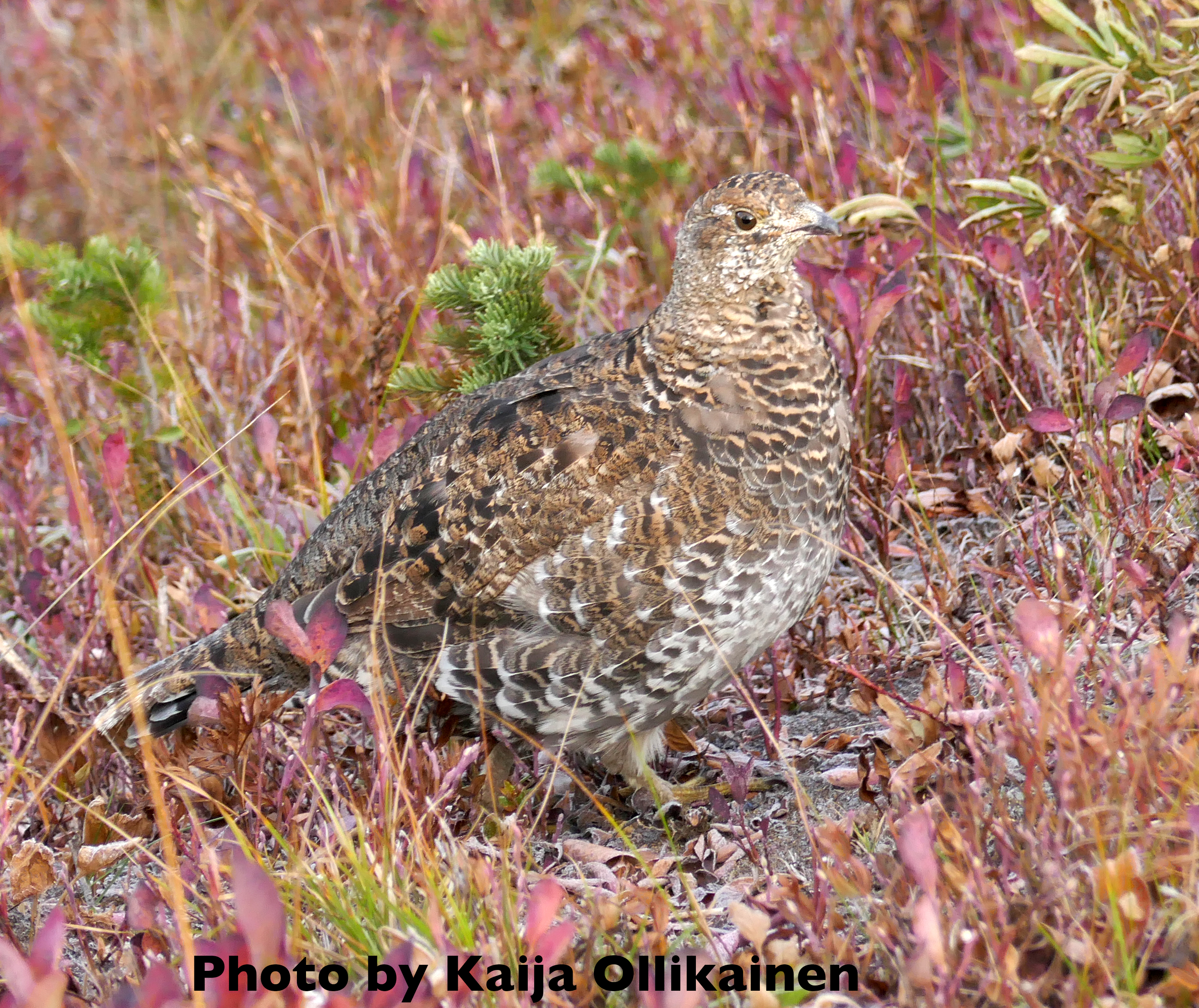
Sooty Grouse
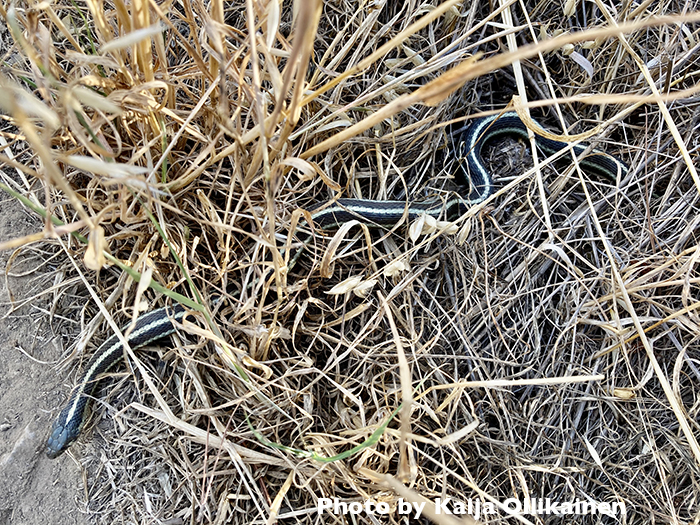
Garter Snake
Can you find the Black-tailed Deer fawn in this picture?
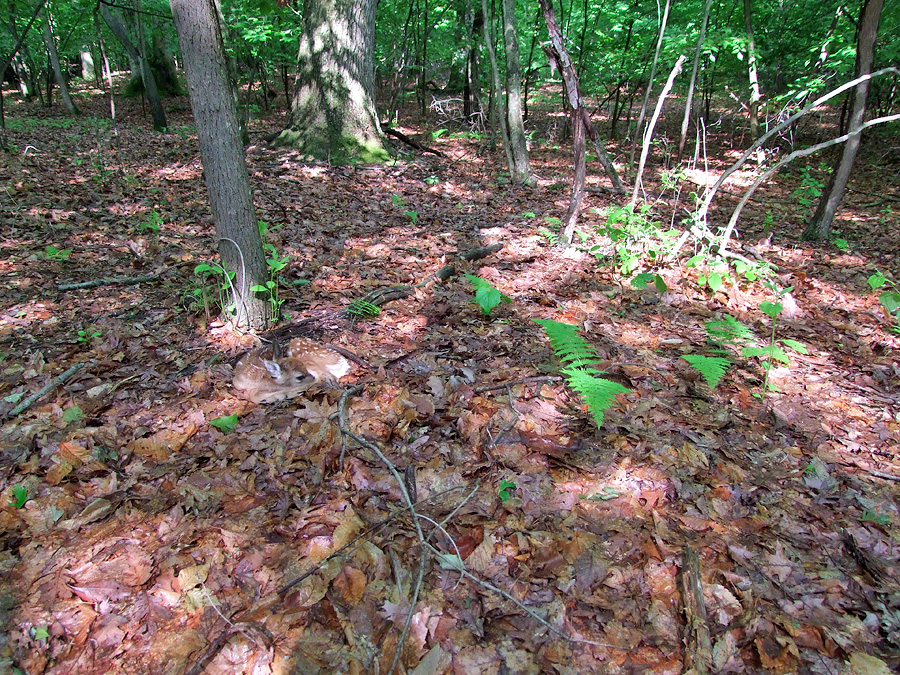
BONUS GAME!
Play this active movement game with your family after your camouflaged Poorwill has been found!
Video clip is 1 minute long.
Scroll down for more activities
⬇
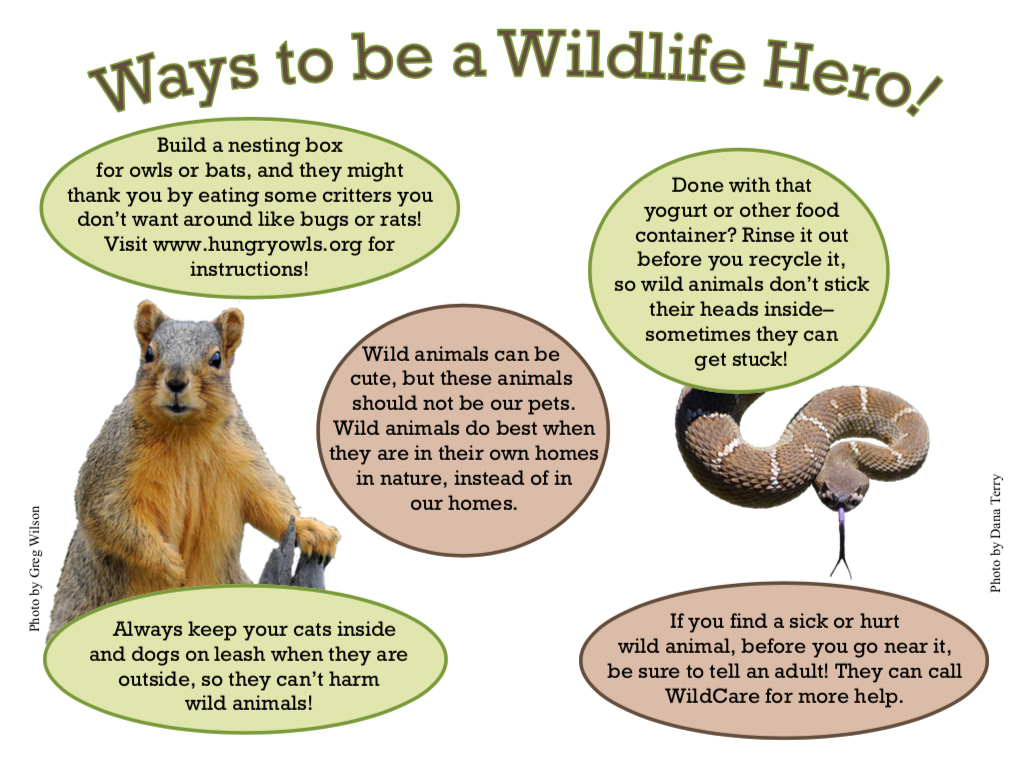
Build a Habitat!

What types of wild animals live in nature near you? In this challenge, you can build a shelter for wildlife in a nearby park, outdoor space, or inside your home!
Let's get started!
Become a wild animal! Dress up as a wild animal of your choice. You can be creative and use clothing, costumes, masks, hairstyles, face paint, and accessories, and even try communicating like your animal ("Chirp, chirp!")
Where do you live? Are you an animal that lives underground in a burrow? In a cave? In a tree? Choose a spot to live where you have food, water, and enough space.
Choose a location with no poison oak!
Build your shelter! Use materials you find in your home, or collect loose rocks and plant parts that have fallen to the ground so that you do not cause any damage to the environment. Will your shelter keep you warm and dry from the rain? Is your shelter cozy for sleeping in?

If you built your shelter outside, check on it after a week and see if an animal has moved in! Check for feathers, fur, tracks, scat, or chewed leaves and fruits nearby.
Did you know...?
Dusky-footed Woodrats build large dens that are passed down from mothers to daughters, generation after generation! Although it may look like a pile of sticks, the inside actually contains different rooms for food storage, bathrooms, and even bedrooms! They are very tidy and line the rooms with leaves like Bay Laurel, which keeps unwanted ticks and mites out. Can you imagine what it would be like to shrink down to their size and explore their shelter?

Scroll down for the next activity
⬇
WildCare videos: Look out for nests!
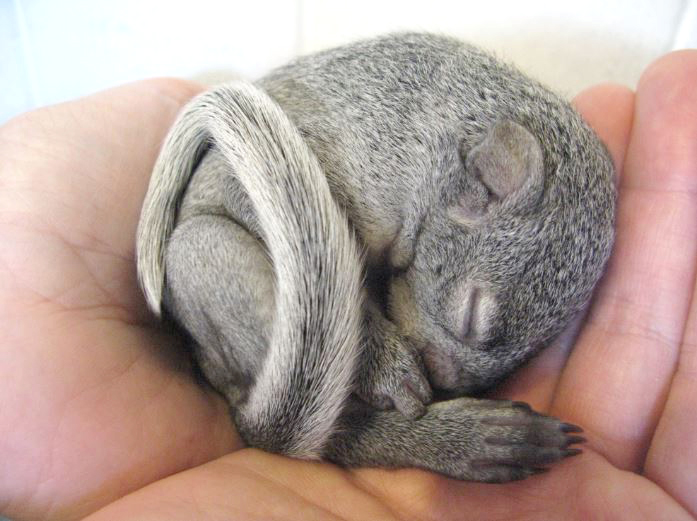 WildCare's goal is to treat sick, injured, and orphaned wild animals and return them to their habitats in nature once they recover. The orphaned baby squirrel in this video fell from his nest and was brought to WildCare's Wildlife Hospital. He had a few injuries, but he was eating well, which is always positive! He remained in care, in the company of other squirrels his same age, until he was old enough to return to the wild.
WildCare's goal is to treat sick, injured, and orphaned wild animals and return them to their habitats in nature once they recover. The orphaned baby squirrel in this video fell from his nest and was brought to WildCare's Wildlife Hospital. He had a few injuries, but he was eating well, which is always positive! He remained in care, in the company of other squirrels his same age, until he was old enough to return to the wild.
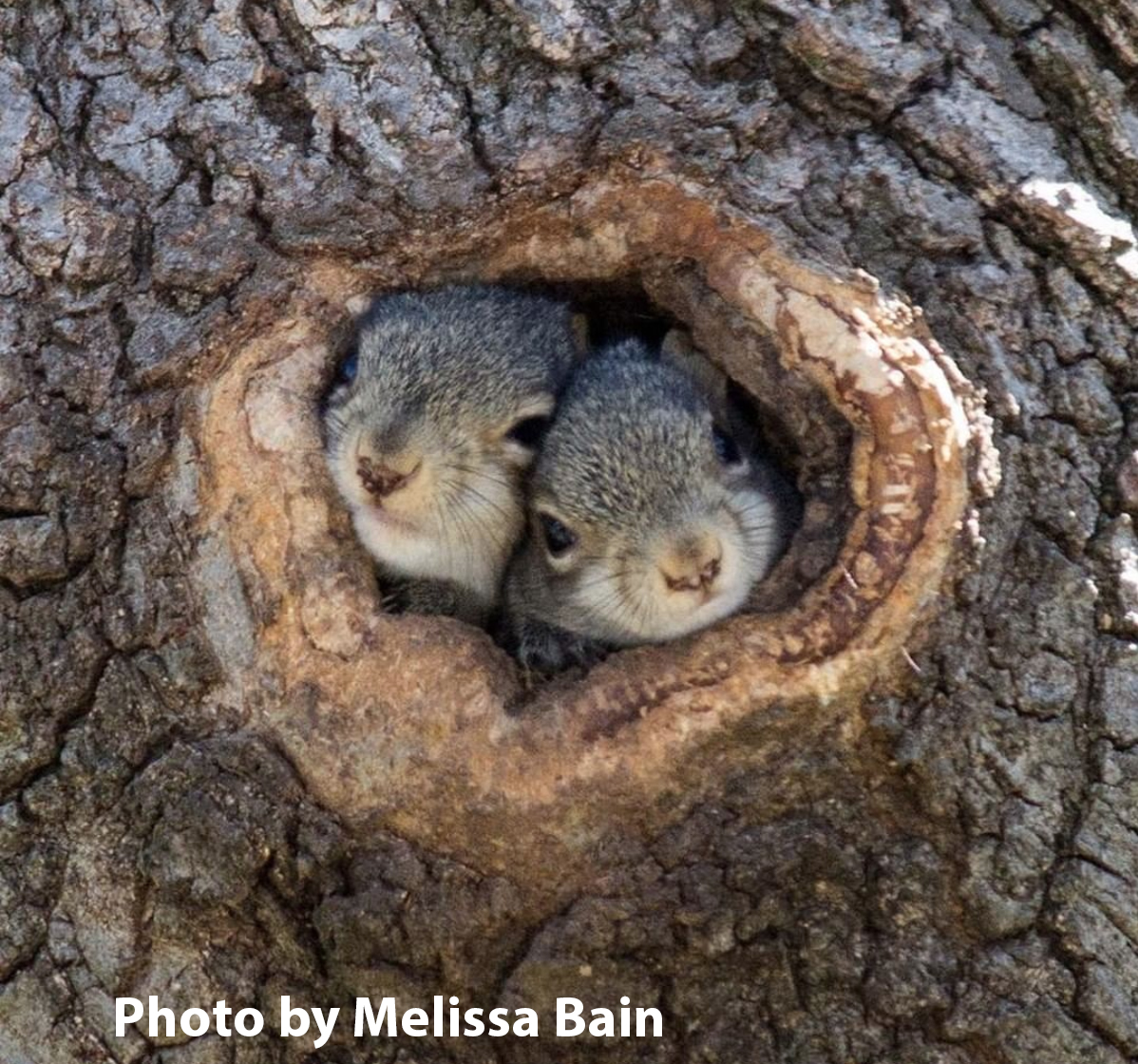
Many squirrels and birds build their nests in trees and bushes and raise their babies between February and September. Everyone can help wildlife by NOT trimming trees during this nesting season. This way, we won't accidentally cut down a nest of baby squirrels or baby birds.
Video clip is 4 minutes long.
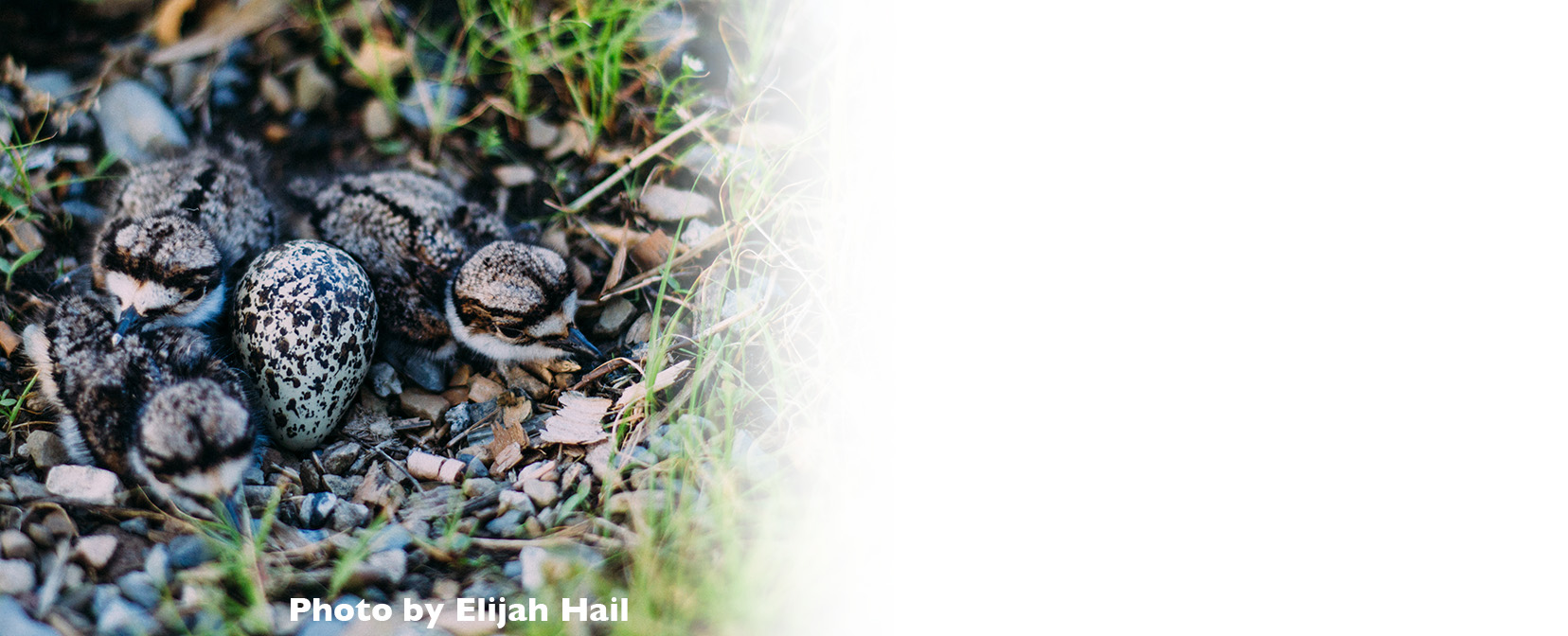
Squirrels aren't the only animals making nests in spring. Different bird species build an incredible variety of nests and lay spectacular eggs! Watch the video below to compare a tiny hummingbird's nest to a big crow's nest. See what adaptation keeps Killdeer eggs camouflaged in their ground nest, and prevents them from rolling away!
Video clip is 5 minutes long.
Scroll down for more activities
⬇
Animal Jokes and Puzzles
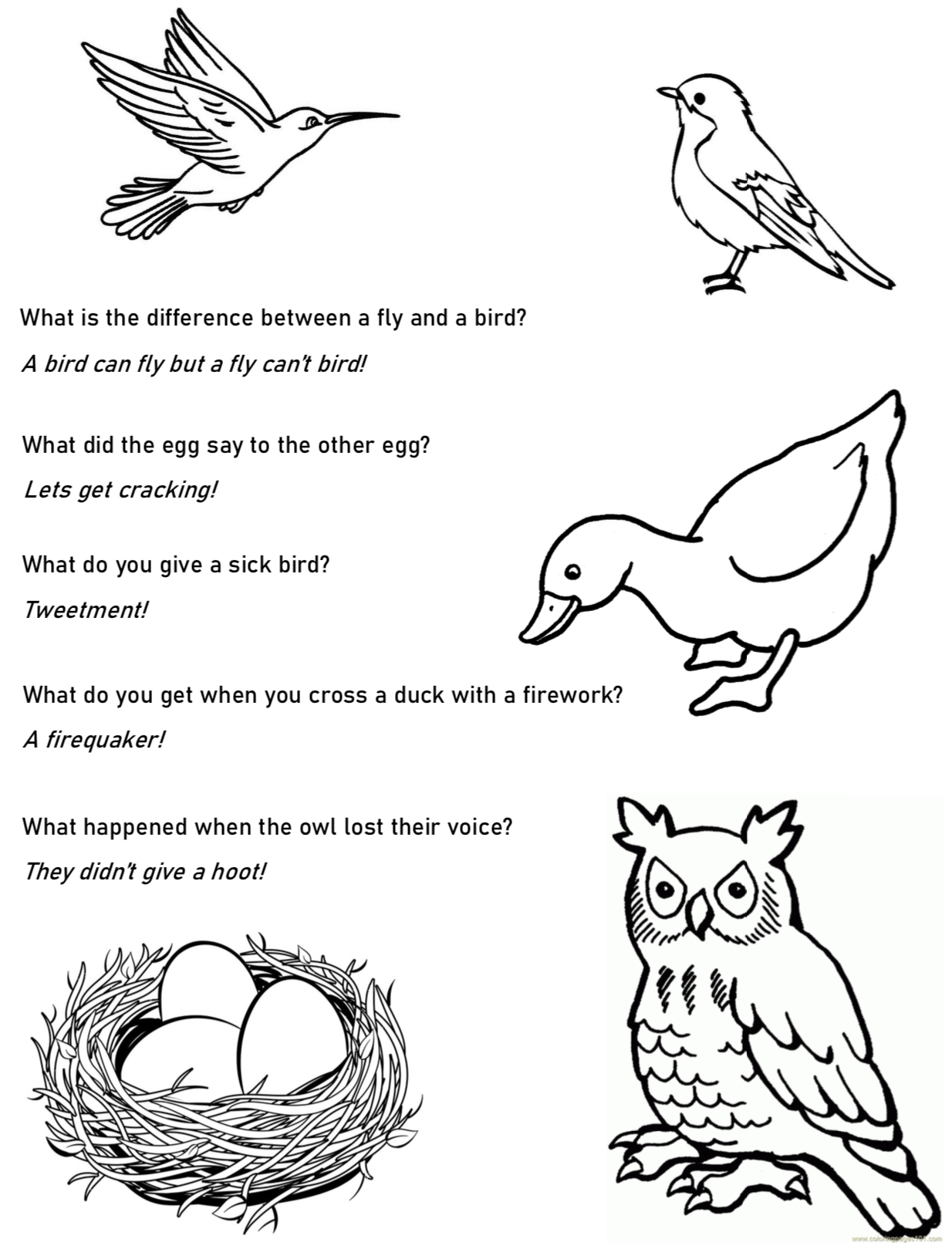
Bird Riddles in Rhyme
What word is each of these riddles about?
For camouflage or warmth at night
To keep out rain, and help with flight...
Curved or straight, to call or tweet;
Shape depends on what they eat...
With talons sharp, hunts night or day:
This short word means “bird of prey"...
Heart beats: hundreds every hour;
This bird visits every flower...
Not inclined to upward motion,
His “flight” happens in the ocean...
Shelter ‘til hatched and grown;
Made with skill by beak alone...
Find answers to your questions about Spring Camp below, or send us an email
Click on the Zoom link sent to your email with your registration confirmation. You will be prompted to either download the Zoom app and join from there, or you can choose to join from your web browser without creating an account. The password is embedded in the link; do not share the link with anyone outside of camp!
Yes! Campers will have plenty of time to ask questions, share stories, and interact with other campers and our wildlife educators over Zoom. Sometimes campers will be automatically muted while our wildlife educators are presenting.
Yes! Campers will get to ask questions and interact with our wildlife educators as they introduce a different non-releasable Wildlife Ambassador animal each day of camp.
Pick up a complimentary packet of printed materials from WildCare before the week of camp, or download and print the craft activity for each day. Please have your camper join the Zoom meeting ready with the printed activity for the day, scissors, and coloring supplies.
Please pick up ahead of time 7 days a week 9am-5pm from March 15th to April 2nd. Come to our front gate and push the Ring button to be assisted. Let the staff member who greets you know that you are here to pick up your Spring Camp packet, and they will bring it to you.
WildCare's address is:
76 Albert Park Lane,
San Rafael, CA 94901.